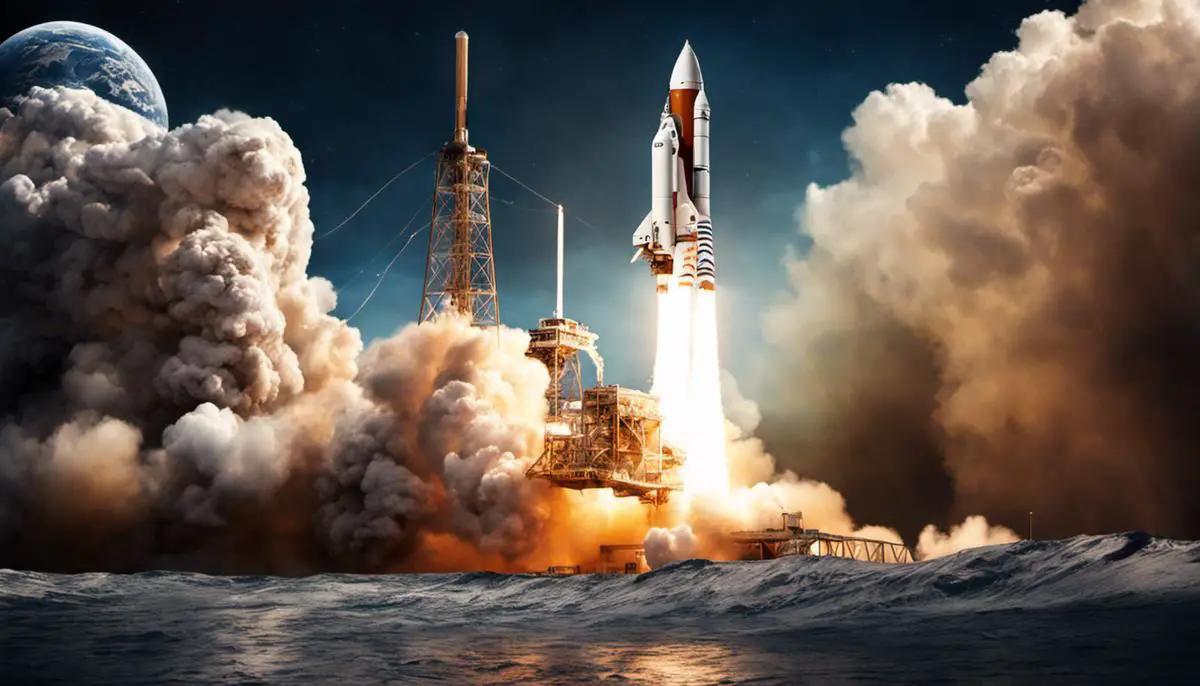In the decade that humankind stepped beyond the confines of Earth’s atmosphere, the Apollo missions stand as a testament to ingenuity, courage, and relentless pursuit of the unknown. This exploration began not in the cold vacuum of space but within the firm parameters of intensive astronaut preparation procedures. The historical overview of the Apollo missions paints not only the broad strokes of scientific triumph but also the intricate details of selection, rigorous training, and key challenges along the way. Highlighting these efforts deepens the understanding of the monumental labor behind every successful space journey. To truly bring these heroic endeavors to life, the narratives of those who underwent this arduous journey—from meticulously picked astronauts to dedicated ground control teams—are indispensable.
Contents
Background to the Apollo Missions
Origin and Historical Context of Apollo Missions
The Apollo program, initiated by the National Aeronautics and Space Administration (NASA) in 1961, was a significant part of the Space Race fought between the United States and Soviet Union during the Cold War. President John F. Kennedy challenged the nation to put a man on the moon by the end of the decade, thereby setting the stage for a series of space missions like none before.
Overview of Apollo Missions
The Apollo missions, spanning from Apollo 1 in 1967 to Apollo 17 in 1972, aimed at accomplishing manned moon landings. Though these missions were fraught with risks, they successfully pushed the boundaries of human achievement. The tragic fire during a launch rehearsal test for Apollo 1 that killed three astronauts underscored the peril inherent in space exploration. Yet, humanity’s quest to explore the unknown persevered, resulting in the historic Apollo 11 mission in 1969 when astronaut Neil Armstrong became the first person to walk on the moon.
Timeline of Apollo Missions
The timeline of the Apollo missions inherently starts with the Apollo 1 mission in 1967, which ended in disaster during a pre-launch test on January 27, claiming the lives of all three crew members. Undeterred, NASA launched the Saturn V rocket on the first manned mission, Apollo 7, in October 1968. This mission successfully tested the command service module in Earth orbit. Subsequent Apollo 8 and 10 missions progressively expanded the program’s scope to lunar orbits. The milestone Apollo 11 mission launched on July 16, 1969, culminating in the historic moon landing on July 20. A series of six more lands followed, concluding with the Apollo 17 mission in December 1972.
Training for the Apollo Missions
The rigorous astronaut training for Apollo missions was a testament to the significance of the program. The astronauts were put through a variety of physical, technical, and scientific exercises to prepare them for the harsh realities of space exploration. The training included learning to navigate and pilot the spacecraft, understanding the lunar surface, and practicing lunar landings. Apollo astronauts were also taken through survival training to equip them if they landed off-course on Earth during a mission reentry. The astronauts were taught geological principles too, to collect meaningful rock samples from the moon. All these training exercises played a crucial role in the success of the Apollo missions and the continued human voyage into outer space.
Purpose and Goals of Apollo Missions
The bold intention of the Apollo missions was to land humans on the moon and return them safely to Earth. Apart from this primary objective, the missions aimed at demonstrating superior technological prowess over the Soviet Union during the Cold War period. In addition, these missions were designed to gain substantial amounts of scientific knowledge, specifically about the moon’s geology and environment. The missions also aimed to test new technology and tools for lunar surface exploration and collect lunar samples for Earth-based studies.
Unfolding the Story of Apollo Missions
Charting the incredible journey of our species, the Apollo missions stand as monuments to human audacity and inquisitiveness. They drastically redirected our understanding of ourselves and the cosmos, and their legacies continue to guide and electrify the course of future space explorations.
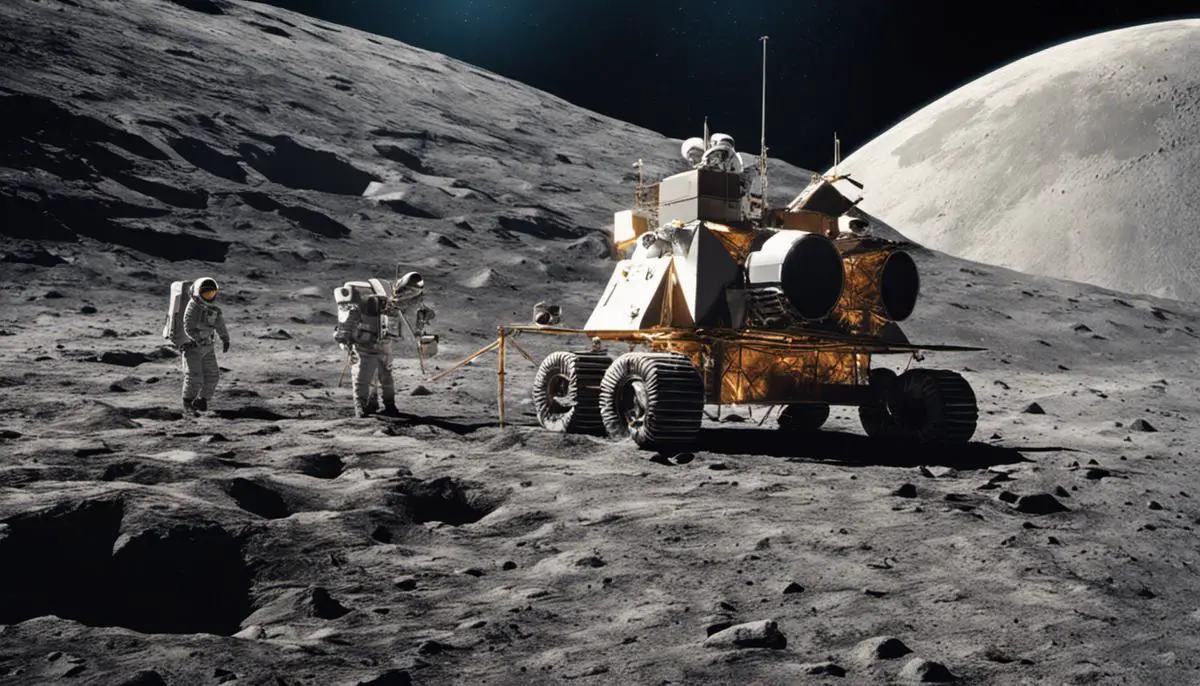
Selection of Astronauts for Apollo Missions
The Rigors of Astronaut Selection
The recruitment process for the astronauts of the Apollo missions was exceptionally strict, starting with nationality as the primary eligibility criterion. Only U.S. citizens could potentially become part of the team. There were also precise stipulations regarding body size, due to the limited available space within the spacecraft. Aspirants could not be taller than 5 feet 11 inches or heavier than 180 pounds.
Perfect physical and mental health were non-negotiable. Potential astronauts had to go through thorough medical checkups, involving a series of laboratory tests, cardiac screenings, psychological assessments, and a wide array of comprehensive physical evaluations. This was done to ensure they were physically resilient enough to endure the hazardous journey to space and back. Their psychological strength to cope with intense pressure was also examined very closely.
Furthermore, candidates were expected to bring an educational background in either engineering or natural sciences to the mission, often having at least a master’s degree or doctorate. Proof of prior engagement in scientific research or experience piloting high-speed aircraft was a crucial part of the selection criteria.
Training Rigor
Once the initial selection criteria were met, the astronauts underwent rigorous training. The training was conducted under all possible conditions they were expected to encounter during their mission. It was aimed at preparing the aspirants for every potential scenario to ensure their survival and success.
Their preparation was two-fold; they underwent both physical training and academic training. The physical training involved fitness regimens, underwater training known as neutral buoyancy training for extravehicular activity (EVA), and lunar gravity simulations. They were taught to perform tasks in a simulated low-gravity environment, and prepared for enduring high g-forces, using a centrifuge.
The academic training aimed to equip each astronaut with crucial knowledge related to the mission. It covered areas like spacecraft systems, geology, navigation, and instrumentation. This portion also included survival training, where they were taught techniques to sustain themselves in different environments and amidst various crisis situations.
Space Suit Training
Every Apollo astronaut went through a detailed training session for their spacesuits. Getting accustomed to the suits was a challenge as they were custom-fitted, hermetically sealed, and consisted of over 21 layers of fabric, each serving a specific purpose. The gloves alone were built with 15 separate layers. These suits were designed to be self-sustaining environments for astronauts in space.
Apollo Mission-Specific Training
Mission-specific training varied depending on the position of the astronaut in the Apollo missions. If the astronaut was tasked with landing the Lunar Module on the moon’s surface, detailed training, including a multitude of lunar landing simulations, was carried out. For astronauts charged with conducting EVAs on the moon’s surface, surface exploration and roving vehicle training were critical.
The Astronauts Behind the Apollo Missions
Behind the Apollo missions stood astronauts set apart by their intellectual brilliance, physical strength, mental endurance, and deep understanding of complex mission parameters. In spite of their extraordinary abilities, they accepted years of repetitive training and set aside personal interests to dedicate themselves to humanity’s most daring endeavor. Therefore, the astronaut training program for the Apollo missions served as a testament to human tenacity, ingenuity, and unyielding dedication.
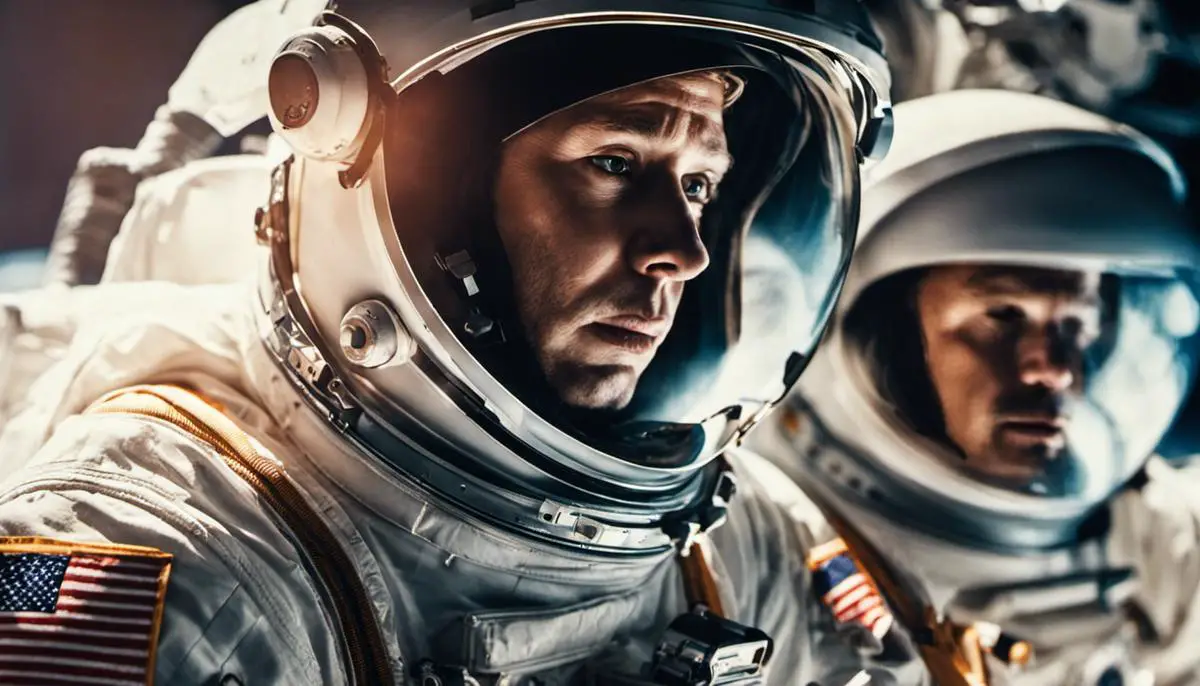
Specific Training Regimes
The Demanding Training Regimen for Apollo Missions
The preparation for the Apollo missions encompassed an exhaustive, multi-tiered regimen. NASA imposed rigorous physical fitness standards on all its astronauts to ensure their bodies could withstand the harsh conditions of space exploration. The training highlighted cardio fitness and muscular strength to combat the risk of muscle wasting in zero-gravity conditions. Astronauts also frequently trained in underwater simulations, such as Neutral Buoyancy Labs (NBL) pool exercises, to emulate the weightlessness of space.
Human Machines and Simulators
A large portion of this technical training was done via specially designed machines and simulators. Facilities like the Centrifuge simulated the high G-forces experienced in launch and re-entry, while lunar lander simulators replicated landing sequences in a controlled environment. More than simulating, they provided astronauts a firsthand feel of handling moon missions, from performing scheduled tasks to combating emergencies. In virtual reality setups, astronauts could realistically interact with spacecraft controls and carry out procedural sequences.
Training modules also included full Mock-ups or models of the Apollo Service and Lunar modules, providing hands-on experience. A special environment, the Reduced Gravity Walking Simulator, mimicked both lunar and Martian gravity, helping astronauts adapt to walking and working in lower gravity environments.
Psychological Preparations
Psychological preparedness was a vital dimension of astronaut training. The immense pressure, both literal and figurative, demanded emotional fortitude. Isolation training acquainted astronauts with solitude of space, and team exercises bonded crews together, embedding seamless cohesion for problem-solving mid-mission. Mock disasters conditioned astronauts to handle emergencies, enhancing their skills under pressure, and bolstering their decision-making capabilities.
Astronauts also underwent survival training for potential off-course reentries landing them in inhospitable terrestrial environments. These sessions, which covered survival in the jungle, desert and sea, bolstered their readiness to any unforeseen circumstances during capsule recovery phase.
The Role of Ground Control
Ground Control, the mission control center located at Lyndon B. Johnson Space Center, played an integral role during the Apollo missions. Here, teams of scientists, technicians, and other support staff aided astronauts in navigation, troubleshooting and emergency management. Before their journey into space, astronauts spent hours building a rapport with ground control personnel. This, in turn, helped foster trust and streamline real-time communications– crucial for a successful mission.
Throughout training for Apollo missions, feedback loops between astronauts and ground control teams remained open, as they collectively shaped procedures and protocols, rehearsing these until they were second nature. This established mutual familiarity and ensured both parties could work together efficiently in real-time settings that often involved life-threatening situations.
Training Overview
All-inclusive astronaut preparations for the Apollo missions encapsulates a complete spectrum of severe physical fitness, extensive technical understanding, and robust psychological toughness. Each factor of the program was meticulously tailored to equip these courageous spacefarers with the aptitude, proficiency, and mindsets required for the stellar success of these remarkable journeys.
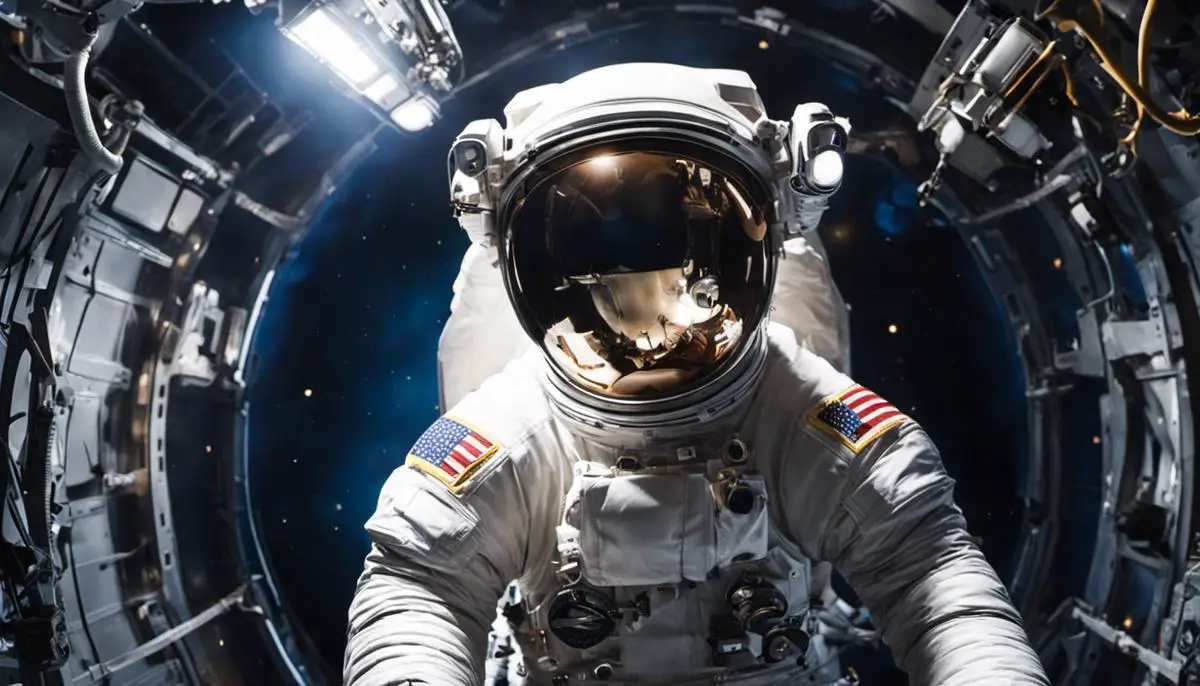
Key Challenges and Solutions
The Apollo expeditions required the astronauts to showcase prime physical and mental capabilities. The training was purposefully crafted with these aims in mind, to prime the astronauts for the austere realities of outer space and the unforeseen hurdles they might encounter during the voyages.
Physical Preparation and Training
Astronauts required comprehensive physical training to cope with the weightless environment of space and the increasing amount of gravity during take off and re-entry. Their training included sessions of intensive weightlifting, treadmill exercises, underwater training, and exposure to high gravitational forces in a centrifuge. The underwater training, also known as neutral buoyancy training, helped astronauts familiarize themselves with conditions of zero gravity. This included many hours spent in a water-filled tank, dressed in space suits, practicing the movements they would be performing during the mission.
Mental Preparation
Astronauts had to be psychologically prepared for the Apollo missions. They underwent cognitive training to enhance their problem-solving abilities, attention to detail, and memory. Simulated missions were part of the program, designed to mimic the conditions of space as closely as possible. This included scenarios such as equipment malfunctions, loss of communication, and meteor showers. These simulations were used to build mental resilience in astronauts and to test how they react under stress.
Technical Skills Training
Technical training was crucial to the success of Apollo missions. The astronauts spent hours learning the intricacies of the spacecraft systems, learning how to pilot the lunar module, and operating the scientific equipment they would use to conduct experiments on the surface of the moon. Their training also encompassed extensive education in astrophysics, geology, and other disciplines relevant to their mission goals.
Survival Training
Survival training was another important aspect of astronaut training. The Apollo astronauts were trained to survive in variety of environments for extended periods, in case they landed off course. This included survival training in desert, tropical, and arctic environments. Astronauts practiced building shelters, gathering food, and signal rescuing teams.
Exposure to Isolation
Living in an isolated environment for an extended period can cause various psychological issues. Astronauts were trained to deal with these aspects by being subjected to periods of isolation during pre-flight quarantine and participating in group activities that promote team building and cooperation under stress.
Medical Training
Astronauts also received comprehensive medical training. They had to understand the potential medical issues that could occur in space, such as space motion sickness, and decompression sickness and be prepared to treat them. They were taught basic medical procedures, including suturing wounds, administering injections, and using defibrillators.
Simulated Gravity Conditions
A significant part of astronaut training for the Apollo missions involved acclimating to changes in gravity. Training in parabolic flights—also known as vomit comets— helped astronauts experience brief periods of weightlessness. This provided a necessary familiarization with the effects of zero gravity on the human body and allowed astronauts to practice moving and coordinating in this challenging environment.
For the Apollo missions, every aspect of astronaut training was meticulously designed to meet the unique challenges that lay ahead. The rigorous regimes aimed to equip the astronauts with the necessary skills to operate efficiently in the harsh, unforgiving environment of space.
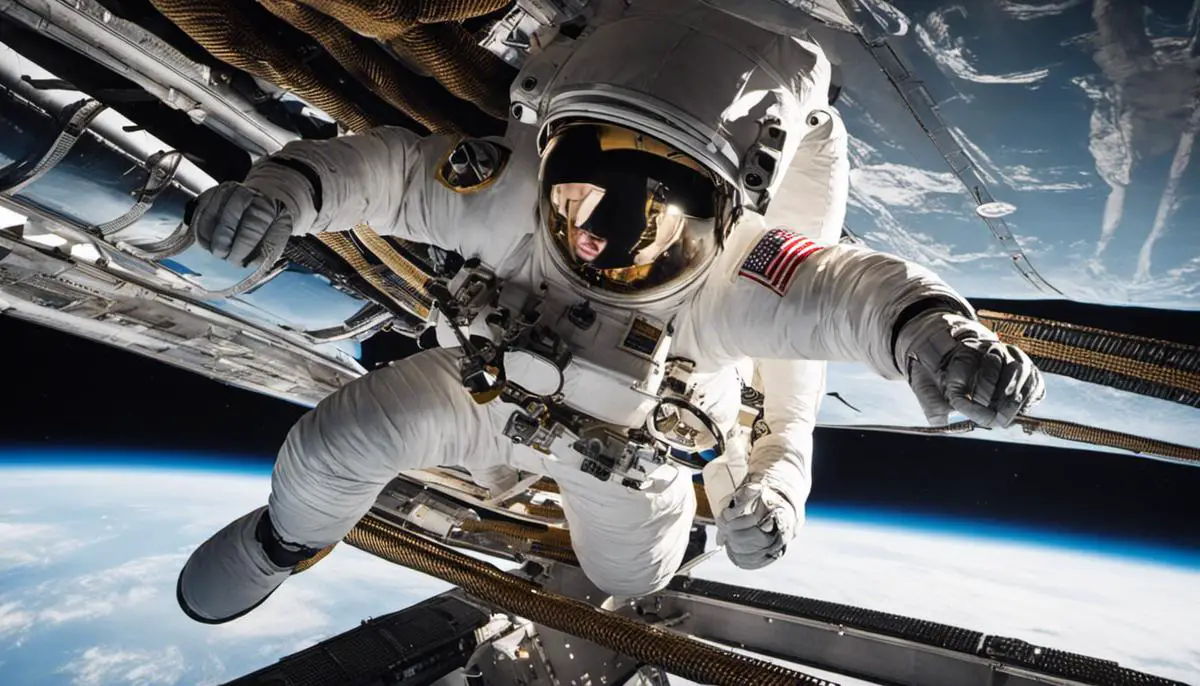
Personal Accounts and anecdotes
Armstrong and Aldrin: The Astronauts’ Approach
The rigorous training presented different experiences for Neil Armstrong and Buzz Aldrin. Armstrong, the resilient test pilot he was, concentrated on mastering all aspects of the Lunar Module simulator. He would often be found absorbed in the demanding training schedules, never allowing himself to become unnerved by the intense pressure. Keen on studying mission plans and blueprints, he typically kept to himself.
Contrarily, Aldrin tended to express his feelings more openly about the dangerous journey that was to ensue. He often shattered the air of tension with his vibrant humor. Aldrin, while diligently committed to his training, was less strict than Armstrong, prioritizing not just perfecting his skills, but also maintaining a mentally healthy state amidst the intense training period.
The Levity of Pete Conrad
Pete Conrad, the commander of Apollo 12, stood in stark contrast to many of his peers. His devil-may-care attitude and easy smile were frequently seen throughout the training period. Yet, beneath his playful exterior, Conrad had a scientific mind that latched onto the complexities of lunar geology, a primary objective of their mission. His endless stream of jests and light-hearted demeanor were invaluable in keeping the spirits high during the relentless training sessions.
Astronaut Alan Shepard: Courage Amid Uncertainty
Alan Shepard’s story was one of courage in the face of uncertainty. Apollo 14’s commander previously suffered from Ménière’s disease, a debilitating inner ear condition. It was uncertain if he could fly again, but he sought experimental surgery to recover his ability to balance and surprising many, he returned to astronaut training.
Despite lingering fears the condition might resurface under the stress of spaceflight, Shepard remained undeterred, pouring himself into training. Others observed his determination, inspiring them in their efforts. Shepard’s story sent ripples of resolve through the astronauts’ ranks, encouraging everyone to tackle their training with unwavering commitment.
Stress Management: The Story of Apollo 16
Astronauts John Young and Charles Duke, the primary crew for Apollo 16, had their training routines entirely upended a few months before their scheduled launch. Originally scheduled to fly on Apollo 13, they were reassigned Apollo 16 mission following a crew medical issue.
Undoubtedly, this abrupt switch was stressful, but Young and Duke took it in stride. Understanding the critical role mental resilience played in their missions, they soon adapted to their new training routines, demonstrating an incredible level of flexibility and patience during their training.
Each astronaut approached their training differently, influenced by their previous experiences, stress management tactics, enthusiasm, and personal drive. These unique, personal narratives provide valuable insights into the human dimensions of astronaut training for the incredibly strenuous and demanding Apollo missions.
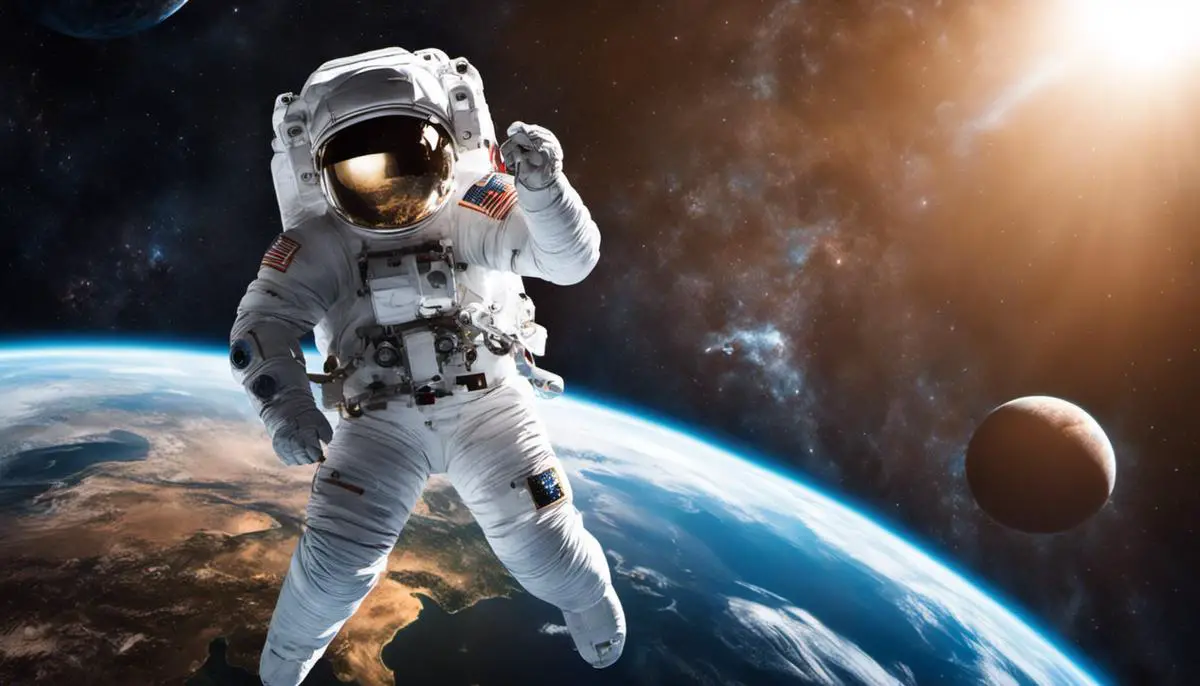
Encapsulating the journey of the Apollo missions, it is evident how the amalgamation of various aspects sculpted a momentous era in space exploration. The selection of extraordinary individuals, the rigor of their training, overcoming innumerable hurdles, and personal experiences manifest the underlying grit and determination. The collaborative feat not only revolutionized humanity’s perceptions about outer space but affirmed that human potential, when complemented by cutting-edge technology and rigorous preparation, could overcome even the hitherto perceived insurmountable. As we continue to dream of visiting distant cosmic neighborhoods, remembering the Apollo missions offers much-needed inspiration, courage, and invaluable lessons that represent the best of human spirit.

With a passion for unraveling the mysteries of the moon, Dr. Luna Sterling is a highly-respected astrophysicist, a dedicated lunar enthusiast, and a captivating blogger. After earning her Ph.D. in Astrophysics from the Massachusetts Institute of Technology (MIT), she served as a lead scientist and mission planner for NASA, contributing significantly to various lunar missions.
For over two decades, Luna has been at the forefront of lunar science, pushing boundaries and pioneering discoveries that have enriched our understanding of the moon’s geological history. However, it’s her infectious enthusiasm for all things lunar that truly sets her apart.
In an endeavor to bring the moon closer to everyone, Luna started her blog, “Luna’s Lens: A Closer Look at the Moon.” With this platform, she offers a unique blend of intriguing moon facts, updates on lunar missions, and personal anecdotes from her experiences in the field, all told in an engaging and accessible manner.
Luna’s unique blend of scientific expertise and warm, humorous writing style has transformed complex astrophysics into compelling narratives that captivate her audience. As a gifted communicator, she leverages her knowledge and experience to relate scientific facts to everyday life, thus making her blog a must-read for both seasoned space enthusiasts and curious newcomers.
Interactive and inviting, Luna frequently encourages reader engagement through thought-provoking discussions and a monthly ‘Ask Dr. Luna’ feature, where she personally answers questions about the moon and space exploration. A celestial storyteller at heart, Dr. Luna Sterling’s passion for the moon is as vast as the cosmos she explores, making her an invaluable beacon in the world of lunar science.
